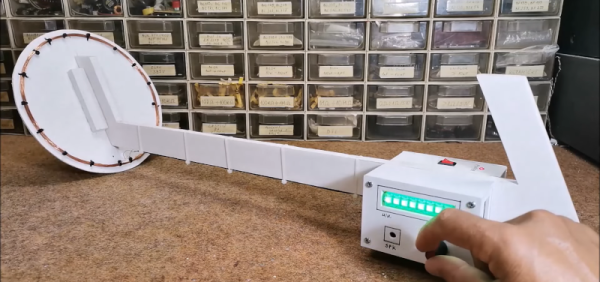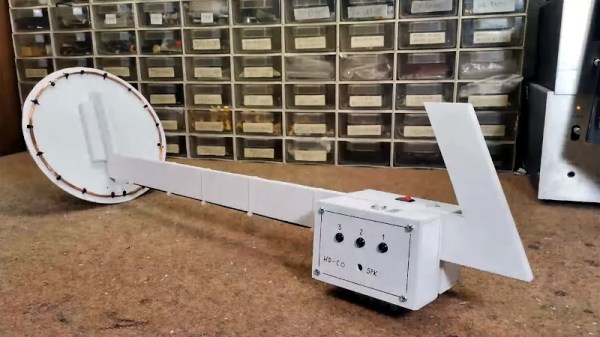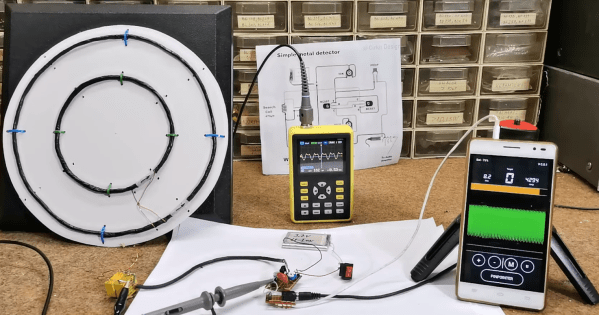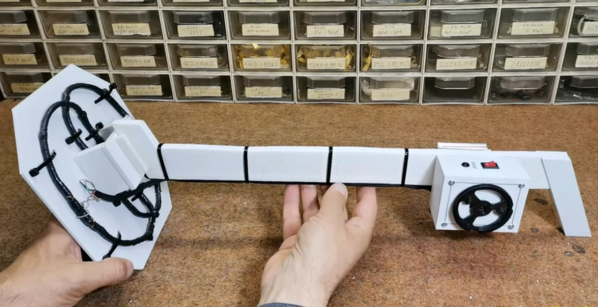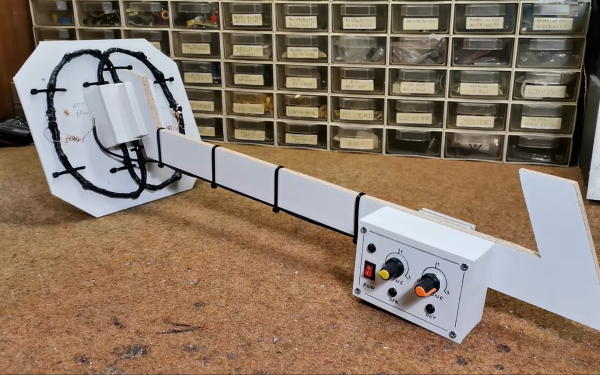If you think of a metal detector, you’re probably thinking of a fairly simple device with a big coil and a piercing whine coming from a tinny speaker. [mircemk] has built a more modern adaptation. It’s a metal detector you can use with your smartphone instead.
The metal detector part of the project is fairly straightforward as far as these things go. It uses the pulse induction technique, where short pulses are fired through a coil to generate a magnetic field. Once the pulse ends, the coil is used to detect the decaying field as it spreads out. The field normally fades away in a set period of time. However, if there is metal in the vicinity, the time to decay changes, and by measuring this, it’s possible to detect the presence of metal.
In this build, an ESP32 is in charge of the show, generating the necessary pulses and detecting the resulting field. It’s paired with the usual support circuitry—an op-amp and a few transistors to drive the coil appropriately, and the usual smattering of passives. The ESP32 then picks up the signal from the coil and processes it, passing the results to a smartphone via Bluetooth.
The build is actually based on a design by [Neco Desarrollo], who presents more background and other variants for the curious. We’ve featured plenty of [mircemk]’s projects before, like this neat proximity sensor build. Continue reading “Metal Detector Built With Smartphone Interface”



